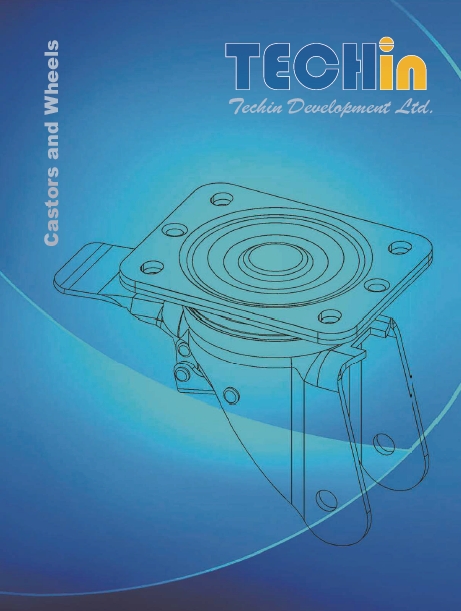We want to teach you what is the conductive castor, where it can be used and also what things you need to focus on while using it.
Just like its name states, the conductive castor is basically an energy-conducting castor. You can use this as a way to conduct current between a moving and static part. Normally, this product needs plenty of conductivity and a bit of resistance. You can find it used in many different fields, from military to electronics. Although at its core, the main use is to try and avoid blocking any current, while retaining the electronic device precision.
Since castors are widely used in the field of electronics, there are many times when you also have anti-static castors. The role of these castors is to actually release the electrostatic charge you have generated by induction and it works flawlessly. Usually when such current is released, this is small, so you don’t have to deal with very high requirements. That being said, you can have high resistance materials if necessary. But at the end of the day, the anti-static castor will focus on removing static while protecting devices from any static damage.
With that in mind, the anti-static castor and conductive castor usually have a different material. Resistivity is certainly something to keep in mind, because a conductive castor has the 3rd power of 10 to the 5th power of 10. By comparison, the anti-static castor has a resistivity from the 6th to the 11th power.
The normal conductive castor is used in medical equipment, electronics and computers. Many factors are using these to prevent any issues with electrical conductivity. They also use anti-static castors in order to eliminate static energy, since object surfaces can end up being very conductive. When you have less resistance, the conductivity is better, whereas when you have more resistance that leads to issues and bad conductivity.
•The way a conductive castor is conducting electricity
A very important thing to note here is that the conductive castor can be made out of nylon, rubber and also super artificial rubber. The conductive property is made via adding various conductive materials in the form of fillers. The fillers can be glass or metal fiber, even carbon fiber, graphite, carbon black or even metal powder. Carbon black is the most powerful mainly because of the low cost, the fact that you can disperse it with ease and it also comes with low density. The resistance value can be around 100-109Ω•cm. It also has a good, rather stable conductivity. The challenge here is that finished products are usually limited to black, so you have to use matching modification.
Moreover, the conductive castors are using things like conductive carbon black in the form of additive to plastic and rubber polymers. These things are designed to help create the carbon black-polymer composites. These can have a good carbon conductivity, but that does depend on the carbon black. They can have electromagnetic shielding, anti-static and conduction properties. In some cases, you will have conductive rubbers that distribute the conductive particles and pressure is used to make contact, which in turn leads to a very powerful conductive system.
You can split the conductive rubber items into carbon black, copper powder and silver powder conductive adhesive. In general, conductive rubber has water vapor sealing, as well as electromagnetic sealing, and it retains proper conductivity.
What’s important to keep in mind is that conductive rubber products can be split into aluminum silver plated, copper silver plated, glass silver plated, pure silver plated conductive rubber and a variety of different wire rubber types. Aluminum silver plated conductive rubber has a rather good anti smog and shielding performance. Pure silver plated conductive rubber has a stellar anti fungal performance, the glass silver plated one has stellar high cost performance, but the copper and silver plated conductive rubber retain very good conductivity, which is something to keep in mind. The overall shielding performance can go up to 120 db (10 GHz) and these products can be extruded or molded, and you can also fiend them in different die cut shapes.
•Conductive rubber principles
The conductive particles that you can find in conductive rubber usually have some type of volume fraction. They contact each other and generate something called the electronic continuous state. That generates conductivity. However, that means the conductive rubber needs to deal with a lot of compressive force if you want to have a good electricity conductivity. You also have a structural design that needs to ensure you avoid adding too much pressure.
•Understanding the difference between conductive and anti-static TPE
TPE and TPR are known for being anti-static materials. For the most part, even the surface resistance value of products differs from one customer to the other, it’s important to keep in mind that you may need material modification. Rubber, TPE/TPR usually have a similar molecular chain structure. Silicone rubber and the TPE compounding system have a multitude of similarities that you have to take into consideration. The TPE compounding system is actually very complex, and you do need it if you want to take into account phase structure compatibility for every component, the dispersion and blending uniformity and many others.
Environment:
You shouldn’t use any conductive castors in any alkali or acid environment. Also, avoid any oil stains, as that can lower the conductivity of any conductive castor.








